Cecropia - The Largest Moth on the Continent
This is too exciting to make you wait until next Sunday's regular edition ...
Here is a partial repost of a newsletter from the other side of last winter, now updated to record a very successful conclusion.
Hyalophora cecropia , the Cecropia Silkmoth
When not working in our own garden, I am often to be found at the Garden at Fritz (https://gardenatfritz.com/), a nearby volunteer project which grows fresh produce for local food banks. In early summer last year I received a WhatsApp photo from a friend working there who had seen a “caterpillar” and wanted to know what it was. From her description, I had an inkling of what it might be and walked over to get some photos.
Wow … !!
There was a group of three hatched eggs and nearby a single second instar larva of the largest moth species to be found in North America snacking away on leaves of buckthorn. How cool is that?
Here are the eggs – each, as you can see, neatly cracked open like boiled hens’ eggs.
The caterpillars (first instar) that hatched from those would have been very small and mostly black and sadly were not photographed. They then will have done some skin shedding with what emerged being the lovely inch-long yellow second instar shown in this photo that I took. At this stage it was still regular caterpillar size. Pretty but nothing special at first glance.
Clearly three eggs hatched but only the one caterpillar was to be found – they are not exactly camouflaged so I assumed that its siblings may have been eaten by one of the many birds around, busily looking for insect food for their nestlings. Fortunately, the Garden at Fritz is used to rearing Monarch Butterfly larvae we find on milkweed plants and so we took over the special facilities to move “Katypillar” in for safety. Food was provided.
Each larval stage (instar) takes about a week or so to progress to the next. Each time it gets bigger and the colours change. There are five larval stages (instars) in all. As each stage progresses, the caterpillar grew in size enormously until it spun a silken cocoon and finally pupated. Cocoons, in which they overwinter, are spun on the host tree or on stout grasses at their base but in this instance the cocoon was settled on the frame inside the protective screen house we had been keeping it in.
This 5th instar caterpillar was about three inches in length and as fat as my thumb … it has to be seen to be believed. You might expect this in the tropics, somehow not in southern Quebec.
Here is the cocoon … and this is how it passed the very cold winter months.
Cecropia moths have only one generation a year and they overwinter in their cocoon to emerge in the first couple of weeks of hot summer weather the next year.
Like other members of the giant silk moth family, the adult cecropia moth lacks functional mouth parts and a digestive system. Consequently they survive only about two weeks while seeking a mate and laying eggs. Common food plants on which they lay eggs are apple, ash, elder, cherry, lilac, poplar and willow plus, as we have seen, alien buckthorn. Their numbers are declining as they are parasitized by the Tachnid Fly that was originally introduced to control Gypsy Moth and Japanese Beetle infestations.
Low population density can be a problem when looking for a mate, so male Cecropia moths rely on their powerful senses to sniff out a female's pheromones. Males can actually detect females from more than a mile away and one study has suggested up to seven miles.
And then - 27 May 2024
We had been checking on the cocoon for several weeks as spring weather moved into hot summer. Around noon today I peeked into the cage (the door had been left partially open so if it emerged when nobody was around, it would not be trapped) and there was Fritz-the-Moth resting from the completion of his/her metamorphosis. This spectacular insect is easily as wide as my hand is long, maybe seven inches in all.

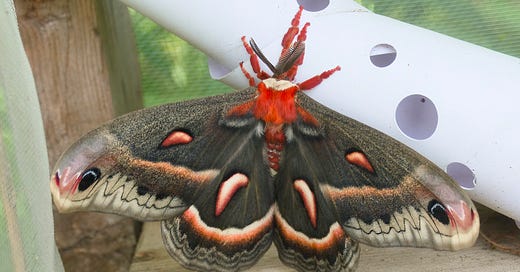



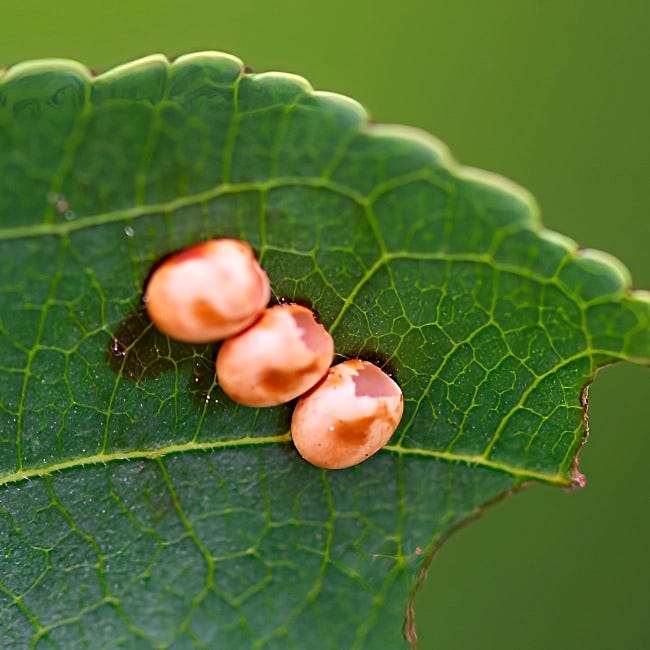
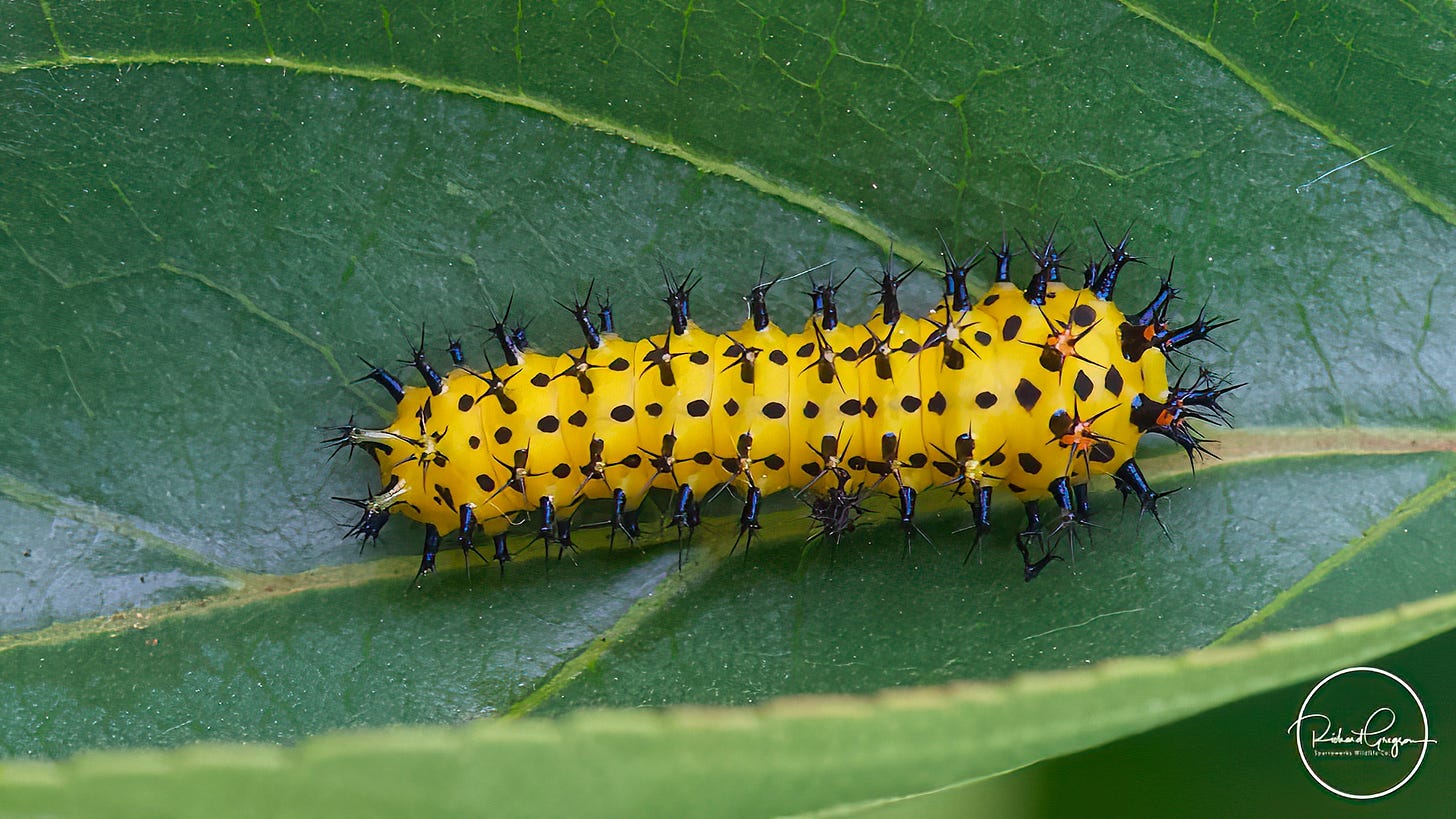
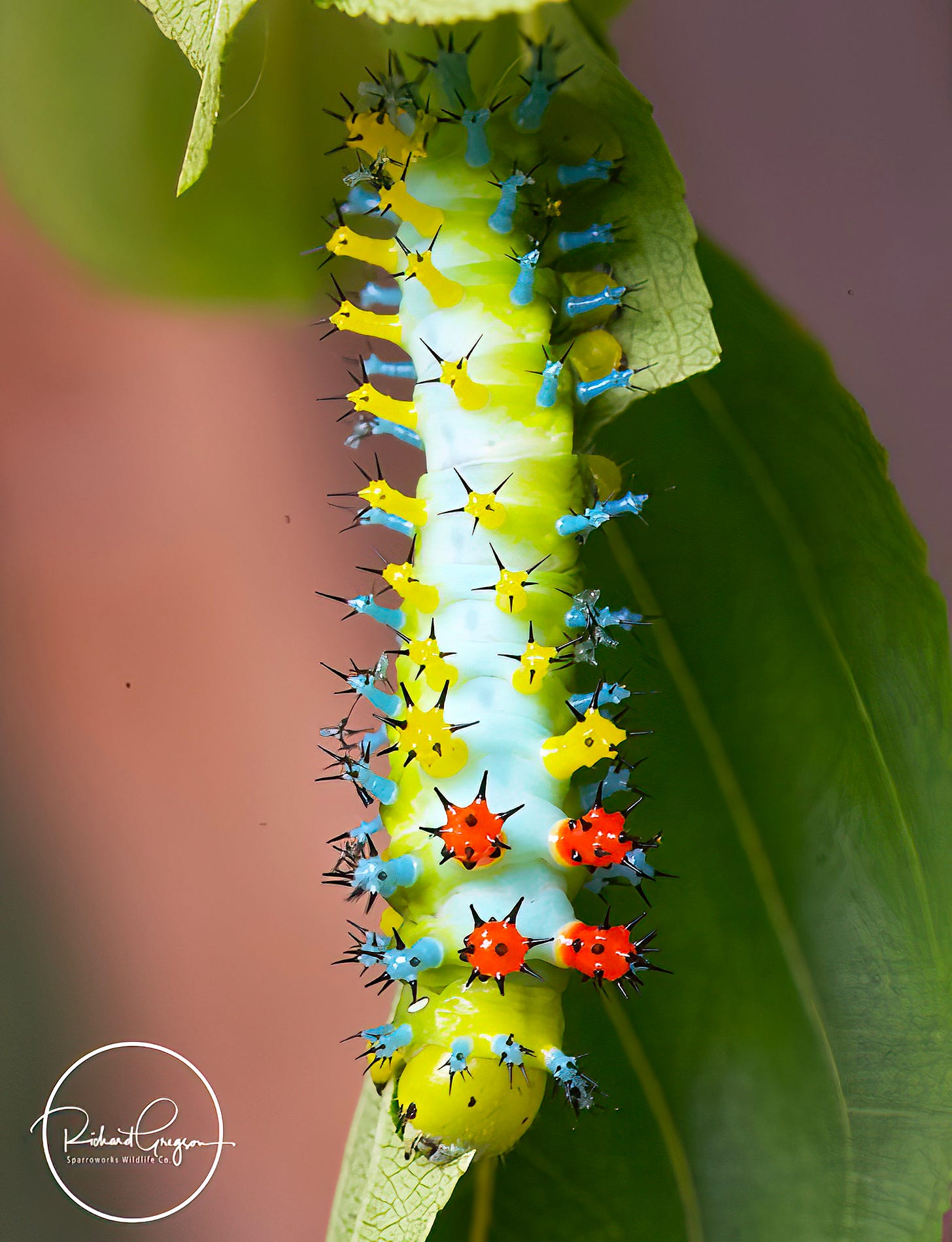
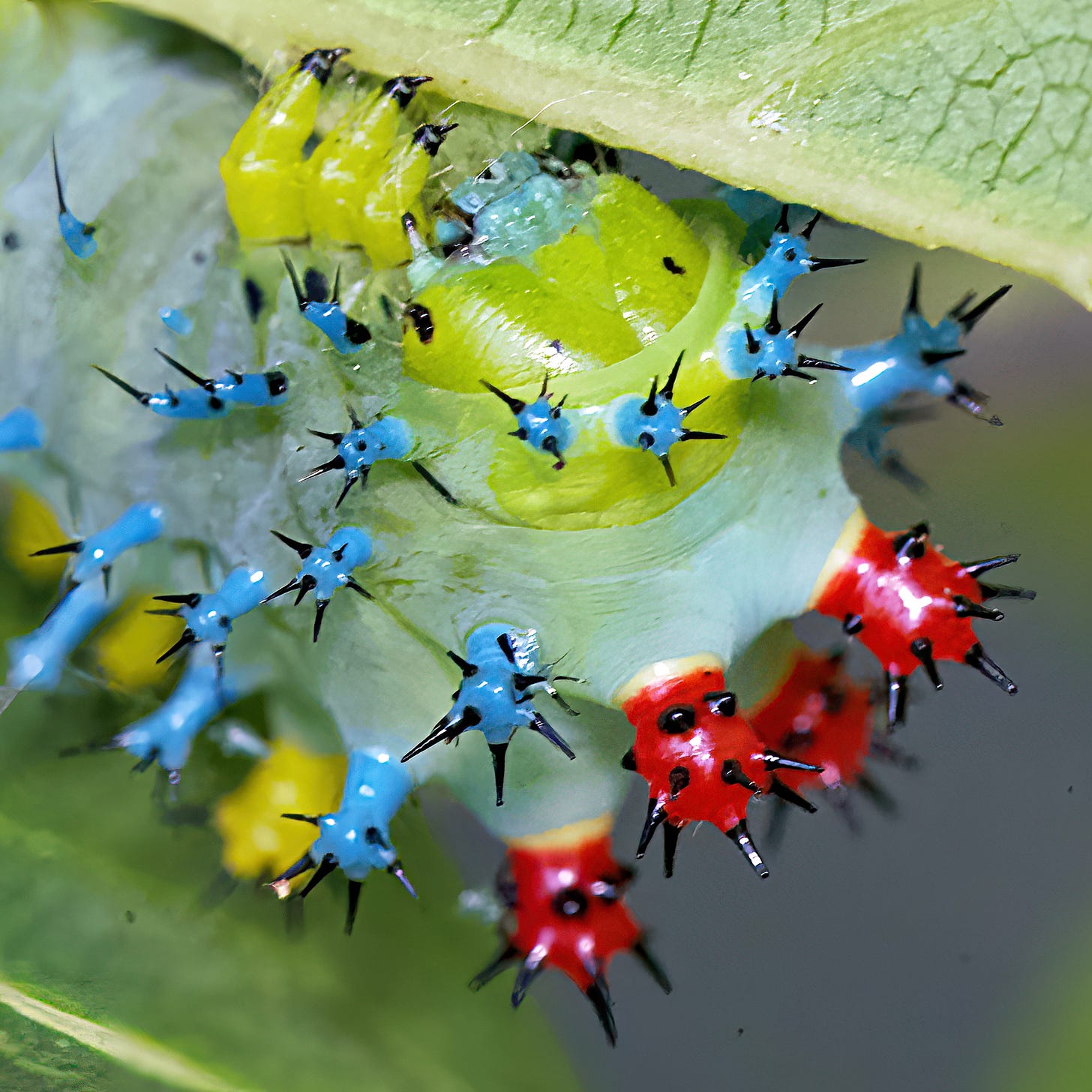
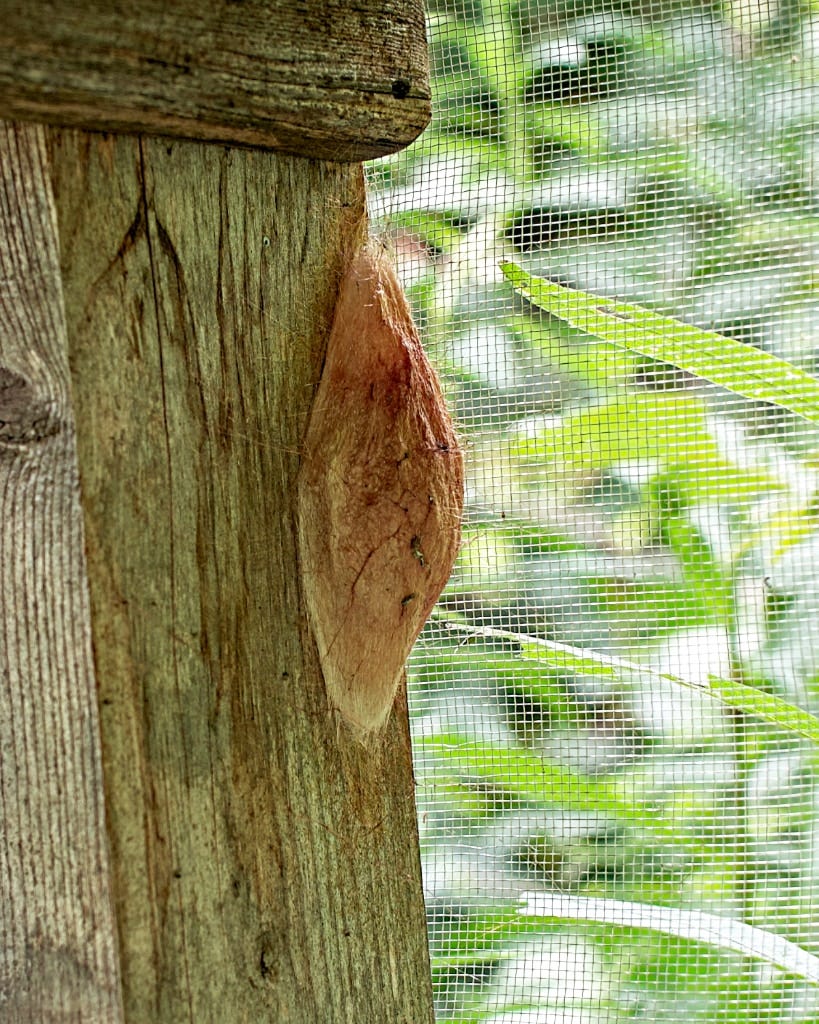
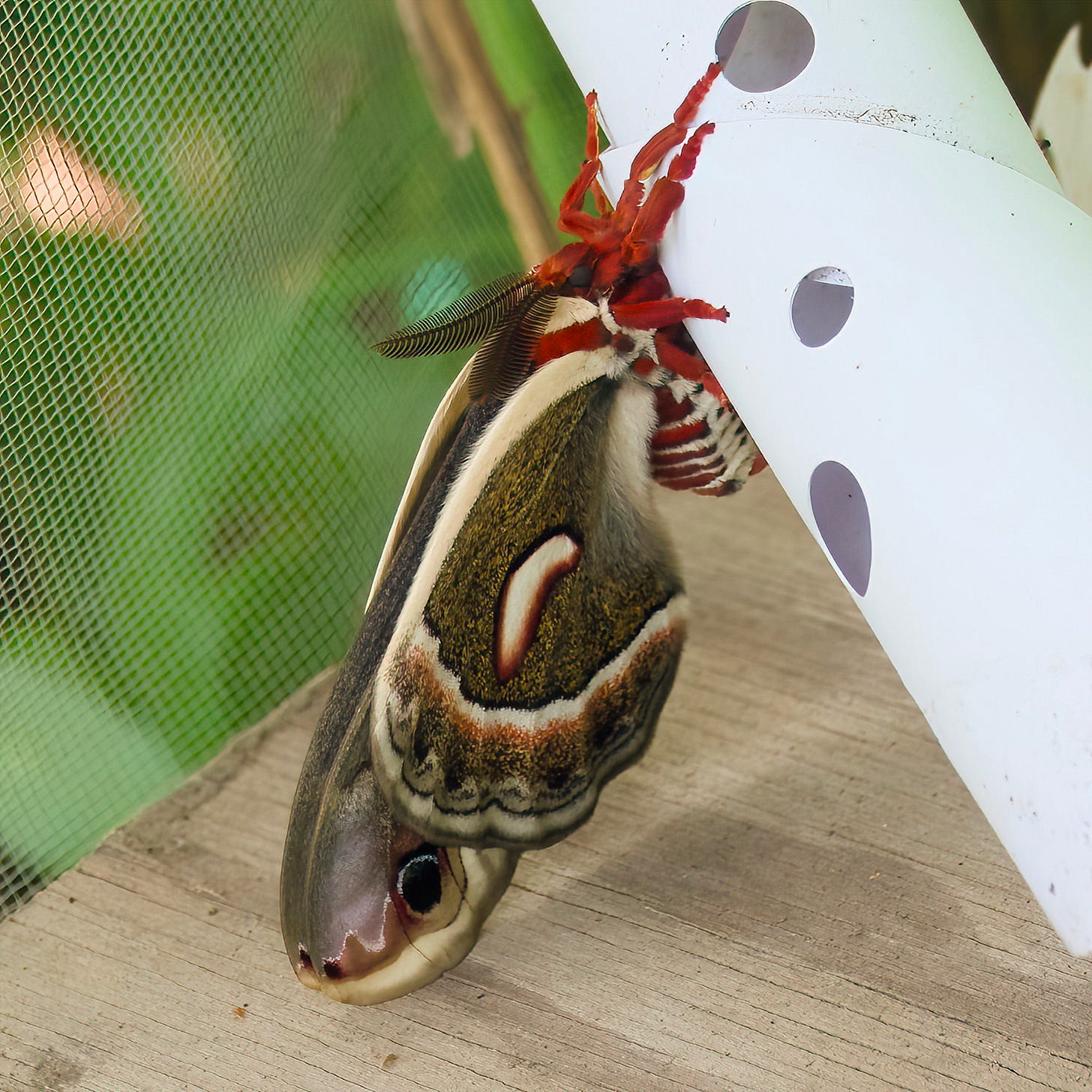
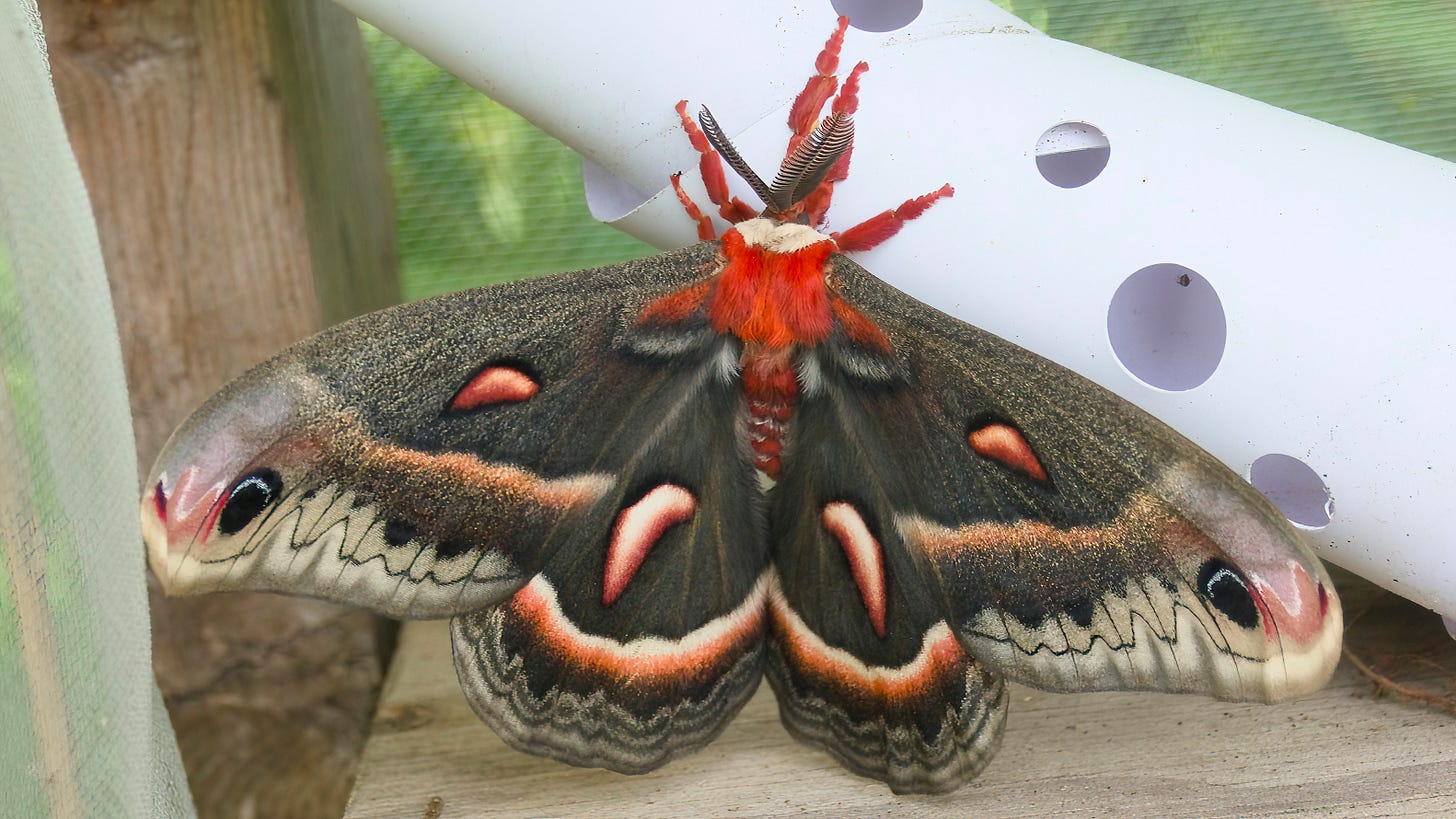
I raised these as caterpillars when I was a kid in Nebraska. Every year some larvae would appear on the pussywillow shrub in the backyard. I would pick one and keep it in a screened box, giving it fresh vegetation every day. It’s eating was so loud it was audible from several feet away! It was an amazing experience to nurture them til they made their cocoons, in which they would stay all winter, and then emerge in the spring. This was really one of the best experiences of my childhood.
Recently, it occurred to me that the pussywillow shrub was a nursery cultivar, not a native species, and my research showed they probably formerly ate a native willow that grows along creeks (or “cricks” as we called them) in the region. There was a crick not far away from my house, but the waterway had been dredged and straightened by the Corps of Engineers and the the flood plain riparian area had been filled in for “development,” all of which would have adversely affected the willows. But the Cecropia just switched to another plant in the same family. Nature is adaptive.
That caterpillar is positively gaudy.